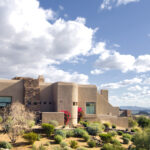Nestled in the rugged hills of northern Spain and southwestern France, the Basque Region lures travelers with its rich blend of tradition, stunning landscapes, and world-renowned gastronomy. In this issue, off we head to this region to explore all that it has to offer.
With a distinct language and tradition, the Basques are proud of their heritage. One of the first things noticed while traveling throughout the region is its unique language. Euskara is one of the oldest languages in Europe, and while many Basques speak Spanish or French as well, hearing Euskara on the streets or in cafés adds an extra layer of authenticity. However, there is so much more special in Basque country, and it lies all around the region.
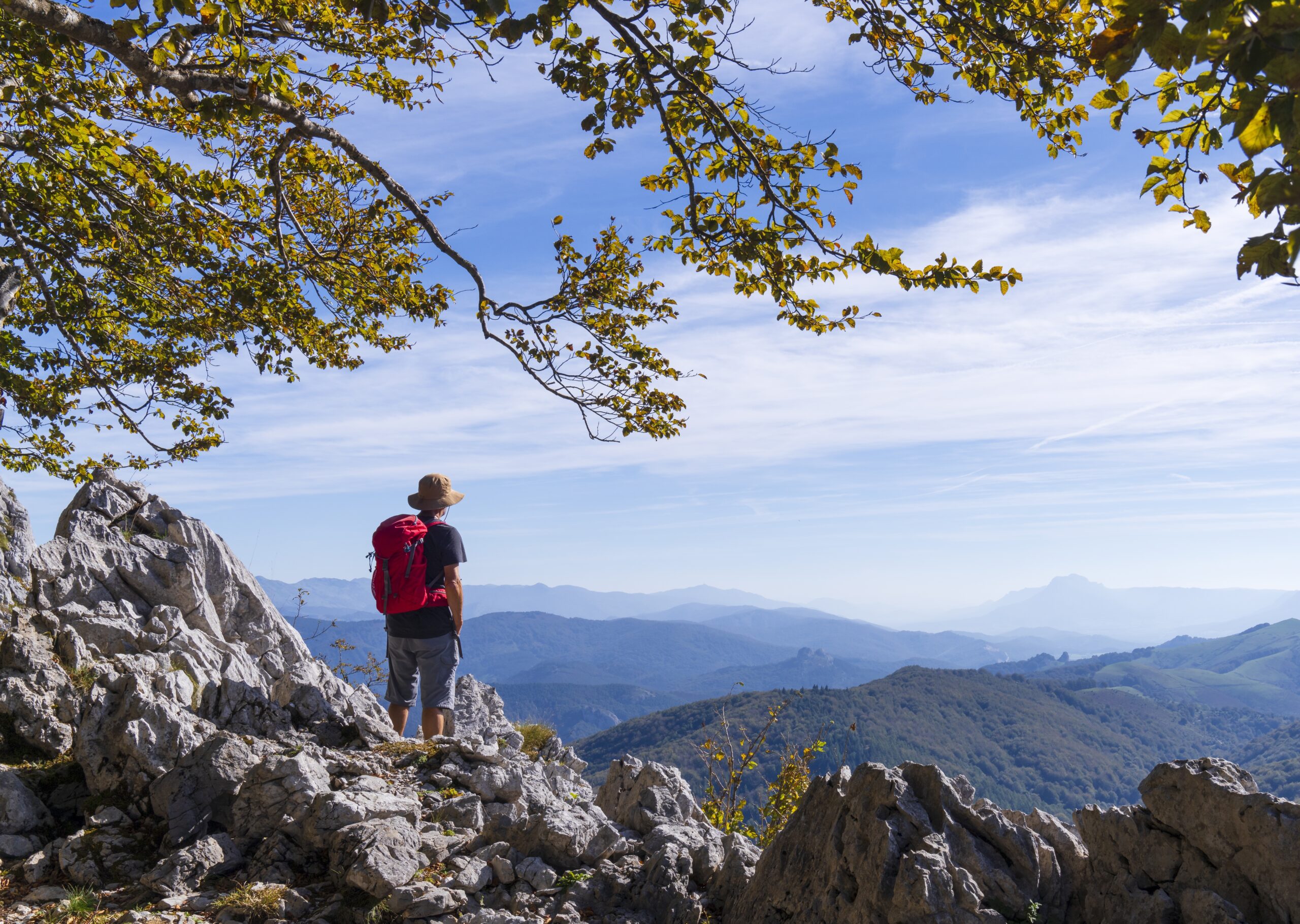
The Cities of the Region
Each city in Basque Country has its unique flair, combining both traditional and contemporary elements. And all are must-sees…
San Sebastián – Donostia in Euskara – is a stunning seaside city famous for its picturesque landscapes, rich cultural history, and world-renowned cuisine. Located just a short distance from the French border, this city has become one of Europe’s most beloved travel destinations.
Its dramatic bay is one of its most distinguishing features, with its crescent-shaped beach, La Concha, often listed among the most beautiful urban beaches in the world. The golden sands and clear waters make it a perfect spot for sunbathing, swimming, or simply strolling along the promenade. The view of Monte Urgull, alongside its picturesque cityscape, provides the perfect backdrop for a relaxing day by the sea.
The city’s Old Town, with its narrow cobblestone streets, is a delightful mix of history and energy. Its beautiful squares and lively atmosphere are the heart of San Sebastián. Wander through Plaza de la Constitución and make sure to visit the Basilica of Santa María del Coro, a stunning example of Basque Baroque architecture.
In these streets live a strong Basque identity, which is celebrated through art, music, and festivals. The San Sebastián International Film Festival, held annually in September, is a prestigious event attracting filmmakers, actors, and cinephiles from around the world and is one of the most important cultural events in Spain.
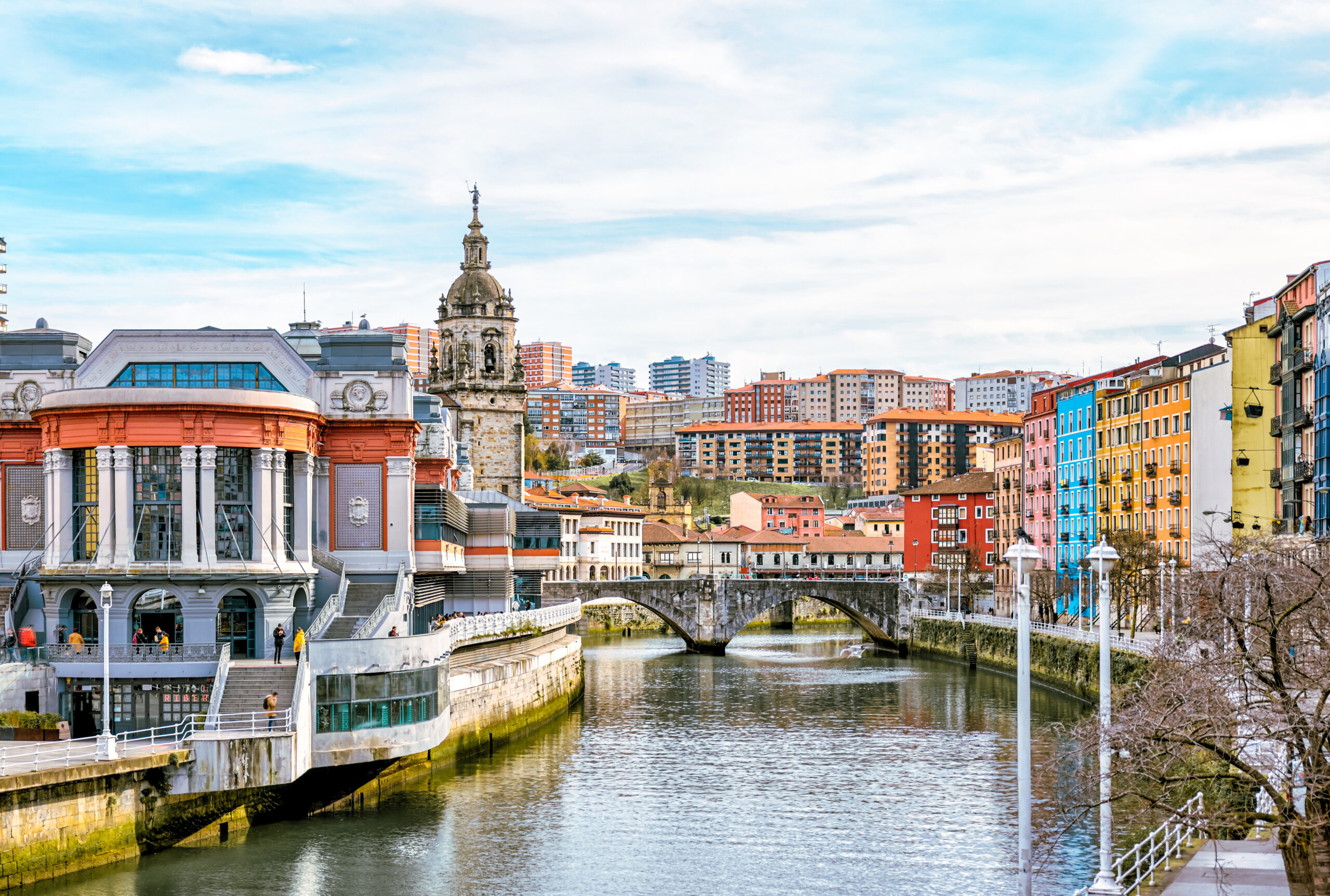
Bilbao is a dynamic city that seamlessly blends the region’s rich history, industrial heritage, and modern innovation. As the largest city in the Basque Autonomous Community, Bilbao serves as a cultural, economic, and architectural hub, offering visitors a captivating mix of old-world charm and cutting-edge design.
The city has evolved from a traditional industrial port town to a world-renowned cultural center, largely due to its investment in modern architecture and the arts. The Guggenheim Museum – undoubtedly the city’s most famous landmark – is a masterpiece of contemporary architecture. Its curving, titanium-clad exterior holds an impressive collection of modern and contemporary art, attracting art lovers from around the world. But the buzz is not just over the Guggenheim, the Bilbao Fine Arts Museum offers a superb collection as well, ranging from European masters like El Greco and Goya to Basque artists and contemporary works. The museum is one of Spain’s most important and provides a deeper understanding of the region’s cultural evolution.
Like San Sebastián, Bilbao has a charming Old Town with a maze of narrow, cobbled streets and historical buildings. It’s where the city’s roots lie and is one of the best areas to explore authentic Basque life. At Plaza Nueva, the bustling square and the heart of the Old Quarter, visitors and locals alike enjoy traditional pintxos (Basque tapas) at the many lively bars. The Santiago Cathedral, with its stunning example of Gothic architecture, is one of Bilbao’s most important historical sites. It also marks the end of the Camino de Santiago (Way of St. James) pilgrimage route for those traveling to Santiago de Compostela. Then there is the Ribera Market. This market is one of the largest covered markets in Europe and a perfect place to sample fresh local produce, meats, fish, and artisan goods. It’s an authentic experience that reflects Bilbao’s food culture and strong agricultural roots.
Vitoria-Gasteiz, the capital of the autonomous region, is nicknamed “The Green Capital of Spain” due to its green spaces and green thinking. The city has an exceptional commitment to sustainability and environmental initiatives while boasting a vast network of green spaces. In 2012, the European Commission recognized the city as a European Green Capital, a prestigious title awarded to cities that have demonstrated excellence in environmental management and quality of life.
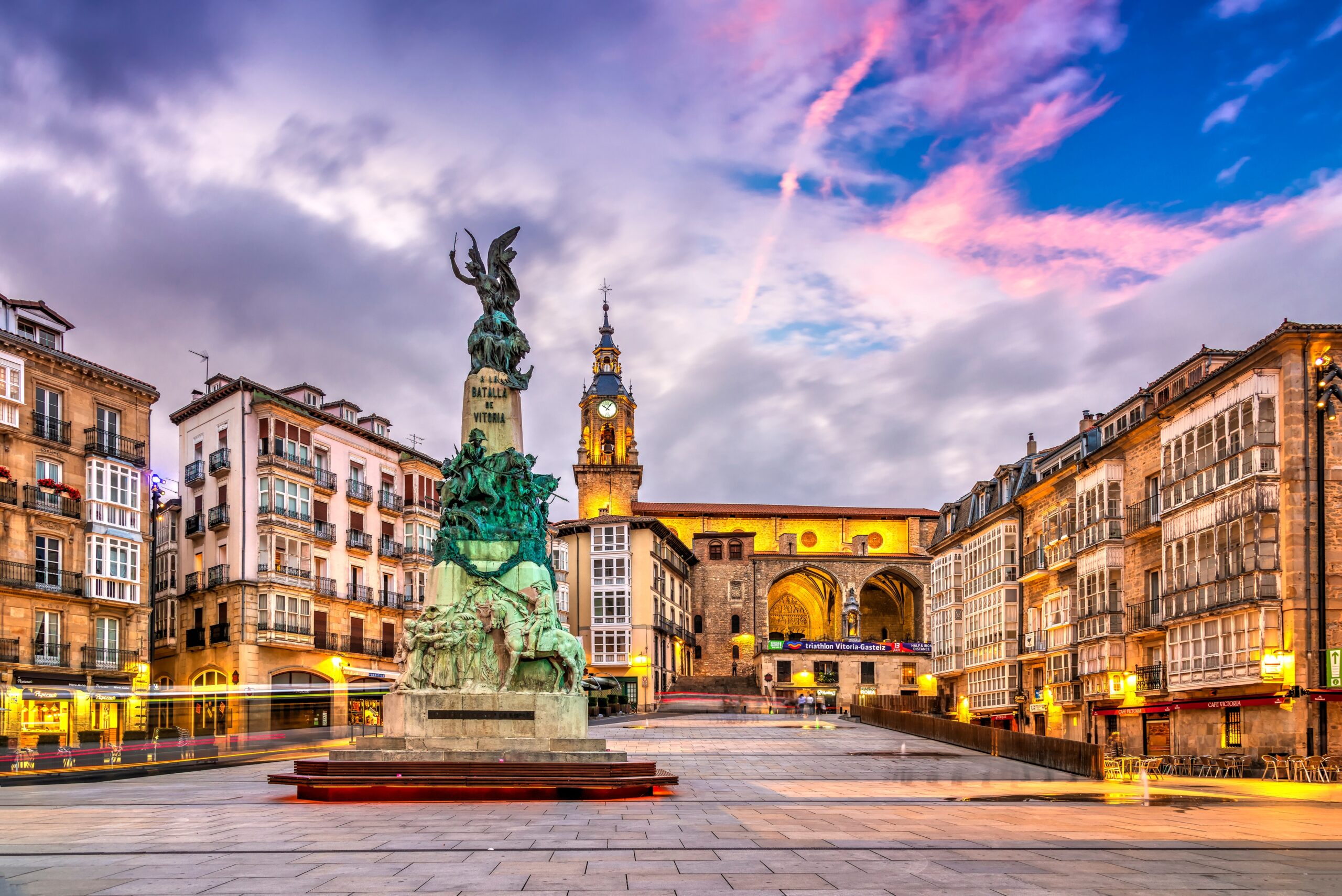
Located inland, just a short drive from both Bilbao and San Sebastián, green rooftops and sustainable buildings are seen throughout the city. The widespread use of renewable energy and the promotion of eco-friendly transportation options, such as electric buses and bike-sharing schemes add to its green reputation.
The Green Ring (Anillo Verde) is a system of interconnected parks and green corridors surrounding the city, offering over 18 miles of walking and cycling paths. It’s perfect for outdoor enthusiasts who want to explore the city’s natural beauty. The Ring connects a series of parks – La Florida Park, Armentia Park, and Salburua Park – each offering a unique experience in the city’s green spaces.
The culinary delights of the capital are myriad. They are delicious slices of Basque cuisine, with an emphasis on locally sourced ingredients and traditional Basque dishes. The city is home to numerous tapas bars and Michelin-starred restaurants, where you can indulge in the best of Basque flavors.
Like San Sebastián and Bilbao, Vitoria-Gasteiz is known for its pintxos. Popular pintxos bars are scattered around the city’s Old Town and offer a variety of flavors, from seafood to meat and vegetarian options. Then there is Basque Cider. Traditional cider houses (sidrerías) dot the city’s streets for those who wish to pair the drink with hearty Basque dishes such as steak, cod, and omelets. And the four Michelin-starred restaurants cannot be forgotten. An impressive number for the small region. Kea Basque, Andere, Zaldiarán, and Karmine provide an elevated dining experience, inviting diners to explore a menu in which creativity meets traditional Basque ingredients.
The Nature of the Region
The Basque region is home to some of Europe’s most stunning natural landscapes, from rugged coastlines to verdant valleys and towering mountains. Whether you’re into hiking, surfing, or simply soaking in the beauty of the countryside, the Basque Country offers something for every outdoor enthusiast.
The Cantabrian Sea is undoubtedly one of the most stunning and untamed coastlines in Europe, offering a dramatic blend of rugged cliffs, lush green hills, and crystal-clear waters. The Basque coast, with its charming, coastal towns and quaint fishing villages, is a haven for nature lovers and adventure seekers alike. Picture-perfect spots like Getaria, a picturesque medieval town famous for its scenic harbor and delicious txakoli wine, and Zarautz, a lively beach town known for its beautiful long beach and vibrant atmosphere, highlight the region’s unique charm.

The Basque coast is particularly renowned for its surfing culture, attracting enthusiasts from all over the globe. Mundaka is a world-famous surf destination, celebrated for its long left-hand waves, making it a mecca for professional surfers and a prime spot for competitions. Its consistent waves, combined with the backdrop of dramatic cliffs, make it one of the most iconic surf spots in Europe. But the region isn’t just for thrill-seekers; there are plenty of places where you can relax and enjoy the beauty of the sea at a slower pace.
On the eastern side of the Basque region, the Pyrenees offer some of the most spectacular and diverse landscapes in Spain, making it a haven for outdoor enthusiasts. These mountains are not only visually striking, with their steep slopes and towering peaks, but they also provide incredible opportunities for both hiking and climbing throughout the year.
The Aizkorri-Aratz Natural Park is a must-visit. This protected area is home to dense forests, vast grasslands, and breathtaking mountain scenery. Hikers can enjoy various trails that lead through thick woods and past dramatic rock formations, all while taking in sweeping views of the surrounding valleys and distant peaks. At the heart of this park lies Aizkorri, one of the highest mountains in the Basque Country; its summit offers panoramic views that stretch far across the region.
Urkiola Natural Park is another prime destination for nature lovers. With its rugged cliffs, beech forests, and serene lakes, Urkiola is a sanctuary for wildlife and an ideal place for peaceful hikes and outdoor exploration. The park’s well-maintained trails lead visitors through quiet landscapes, offering the chance to spot local wildlife, including birds of prey, deer, and wild boar. Mount Durangaldea and Mount Anboto are among the most prominent peaks, and they provide incredible views for those who are up for a challenge. Urkiola is also a great location for rock climbing, with its towering limestone walls attracting climbers from around the world.
A unique natural element in the Basque Region is the Urdaibai Biosphere Reserve. This is a stunning UNESCO-listed area located in the heart of the Basque Country, renowned for its extraordinary natural beauty and rich biodiversity. Spanning over 120 square miles, the reserve encompasses a diverse range of ecosystems, including forests, wetlands, marshes, and river valleys, all of which create a habitat for a wide array of plant and animal species. This protected natural area is one of the most ecologically significant regions in the Basque Country, offering a sanctuary for wildlife and a haven for outdoor enthusiasts.
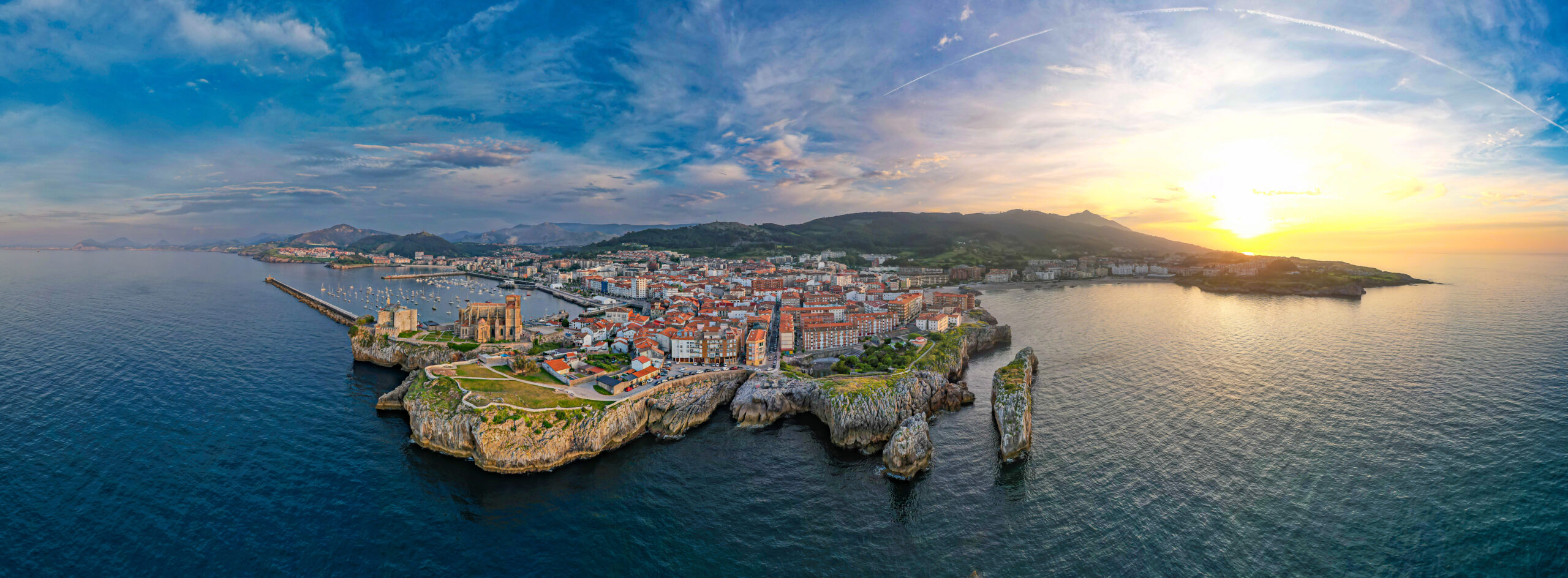
One of the highlights of the Urdaibai Biosphere Reserve is its exceptional birdlife. The wetlands and marshes provide an ideal stopover for migratory birds, and the reserve is especially well-known for being a key site for birdwatching. The area hosts over 200 species of birds throughout the year, including waders, herons, and eagles, making it a paradise for ornithologists and nature lovers alike. The Oma Forest, with its ancient oak trees and unique painted trunks, is another feature of the reserve that provides an excellent setting for birdwatching, as well as a tranquil retreat for those looking to immerse themselves in nature.
The Biosphere Reserve also encompasses small rural villages, where visitors can experience the local Basque culture and witness traditional architecture. Exploring these charming settlements offers a glimpse into the authentic way of life in the Basque countryside. Villages like Gernika, which is famous for its role in Basque history and its beautiful parkland, and Elantxobe, a picturesque seaside village with steep streets, add a rich cultural layer to the natural beauty of the region.
The Basque region is an extraordinary mix of culture, cuisine, and natural beauty, making it an ideal destination for those seeking a blend of history and adventure. Whether you’re exploring the cosmopolitan streets of Bilbao, savoring pintxos in San Sebastián, or hiking through the Pyrenees, a visit to Basque country promises a rich and unforgettable experience. With its unique identity, passionate people, and breathtaking landscapes, it’s a place that will stay with you long after you’ve left.


